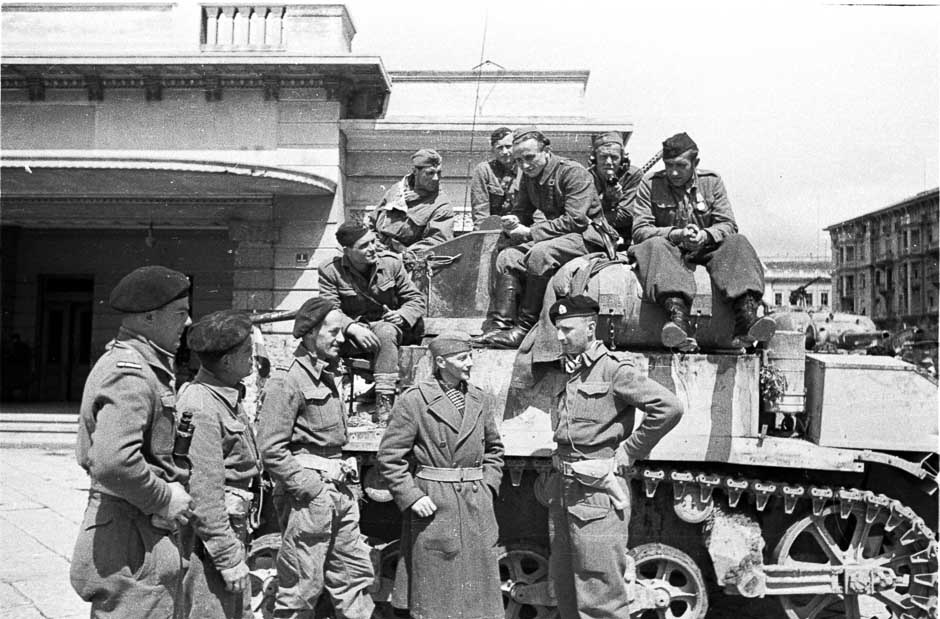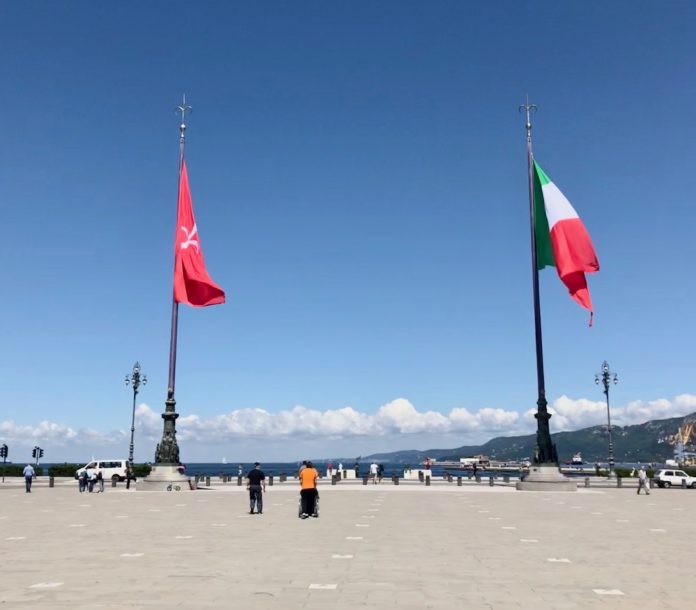Trieste for the first time officially celebrates the liberation from the Yugoslavian occupation in 1945, which lasted 40 tormented days marked by violence, arrests and deportations.
The celebration began in Piazza Unità at 10 am with the flag-raising in the presence of the city’s authorities, headed by mayor Dipiazza and FVG’s governor Massimiliano Fedriga.

A New Zealand tank crew chats with Yugoslav partisans in the Italian city of Trieste, circa May 1945. The 2nd New Zealand Division had linked up with units from Marshal Josip Tito’s National Liberation Army in the city on 1 May 1945, the day before German forces in Italy surrendered. A tense stand-off quickly developed as the Yugoslavs sought to occupy Trieste. New Zealand troops stood firm and the communist-led partisans withdrew from the city the following month.
Trieste has always had a culturally diverse history – for centuries, it was part of the Austro-Hungarian Empire; by the post-war years, it was Churchill’s southern outpost of the Iron Curtain dividing the West from the communist East.
Immediately after World War Two, Trieste, on the border with Yugoslavia, was recognised as a free state under international law, though it remained under military occupation until 1954, when it was returned to Italy.
By In Trieste





























